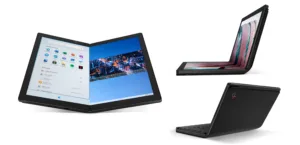After yesterday’s dig down in the weeds of colour gamut measurement, I’m going in the other direction today with some thoughts about devices and operating systems, prompted by recent changes by Apple in its iPad Pro that have brought its tablet and Mac computers closer together.
One of the big changes that has happened recently is that the latest iMac is using the same hardware processor as the iPad Pro, so the iPad has at least as much power as a desktop computer. That’s new for Apple, I think. However, Apple runs two different operating systems, iPadOS and MacOS on the different devices. And, of course, both are different from its smartphone OS, iOS.
I’m no expert on the Apple software ecosystem, but I have seen reports from those that are, that say that Apple has added features from MacOS to the iPad and vice versa in recent years. So why not simply combine them to a single OS? For a long time, Apple has said that it doesn’t want to do this as it doesn’t want to risk the dilution of the experience on each, which should be as good as possible. Cynics have suggested that there might also be less reason to buy a PC and a tablet if they run the same software! Since the iPad Pro launch, an Apple executive has said that the philosophy of optimisation remains, but, I would add, these things can change.
Nobody has Succeeded with a Single OS
In reality, nobody has managed to make a success of using the same OS to extend from hand held mobiles to large screen PCs. Microsoft has tried various strategies to extend Windows, but the smartphone side failed. Over the years, I have reported on many initiatives from start-ups to Samsung to extend Android upwards to a full desktop experience, but none has succeeded in any meaningful way in terms of impact on the market. The reality is that building a system that is designed to be used on the move and hand-held is different from building a desk-based experience with a keyboard and a mouse. That’s why Google has Android, but also has the ChromeOS environment.
Shells Appealed
I was quite a supporter of the idea of ‘shell notebooks’ – the idea of using a device that looks like a clamshell notebook, with a 11″ to 15″ display and a keyboard and a big battery that could be connected to a smartphone and turn it into a PC of sorts. I even spent some money on an Andromium kickstarter project that eventually ran out of steam, beaten by the challenges of making a smartphone work like a desktop OS. Acer, HP and others have tried and Samsung has probably done the best job, with its Dex software and hardware, but it really has not had a significant impact commercially. I did manage to find a positive review of Dex at Sammobile.com, but it took some digging. Many were put off by the earlier and less useful implementations.
These questions, I think, may become more important over the next few years as flexible, foldable and rollable displays become more prevalent and the lines between the sizes and applications become increasingly blurred. There was a time when there were smartphones, tablets, notebooks and monitors, each of which could be defined, basically as ‘the best device for each screen size’. I gave talks that showed that if you set out a diagram of screen sizes, Apple had filled most of the gaps in the market.
Then phablets came along (around 10 years ago). However, smartphones got bigger and bigger and, with flexible, now go up to around 8″ diagonal – the size of an iPad Mini. That’s not the end of the evolution. I have liked the ‘trifold’ concept for folding devices since I first saw it, and a device based on a larger smartphone, with three sections would fold out to around 10″ diagonal.
Of course, there are also developments with folding displays in notebook formats. Typically, like the Lenovo X1 Fold and the Microsoft Surface Duo these allow part of the screen to be used as a soft keyboard, but also have to enable a hardware keyboard (the X1 Fold’s mechanical keyboard slips between the two folded halves, filling the space that would otherwise allow dirt etc to enter – a neat solution).
Lenovo’s X1 Fold – click for higher resolution
There are real challenges in ensuring that apps work correctly in all the different configurations that are possible with multiple screen devices, and Microsoft is developing Windows 10X which had been slated for release in the spring of 2021, but reports say that the general release date has been pushed back to the second half of this year. This report suggests that it has been revised to only work initially on low-end clamshells, rather than foldable devices and that foldable support may not happen until after 2021.
A dig around the X1 Fold forum shows some of the issues that are making use of this kind of device less seamless than users might have hoped. We’re clearly in the early days of this kind of form factor. I suspect, too that we are still in the relatively early days of working out the way to balance the best experience in a particular (as Microsoft calls it) posture of a foldable and flexible display with the widest and simplest support from ISVs. (BR)


